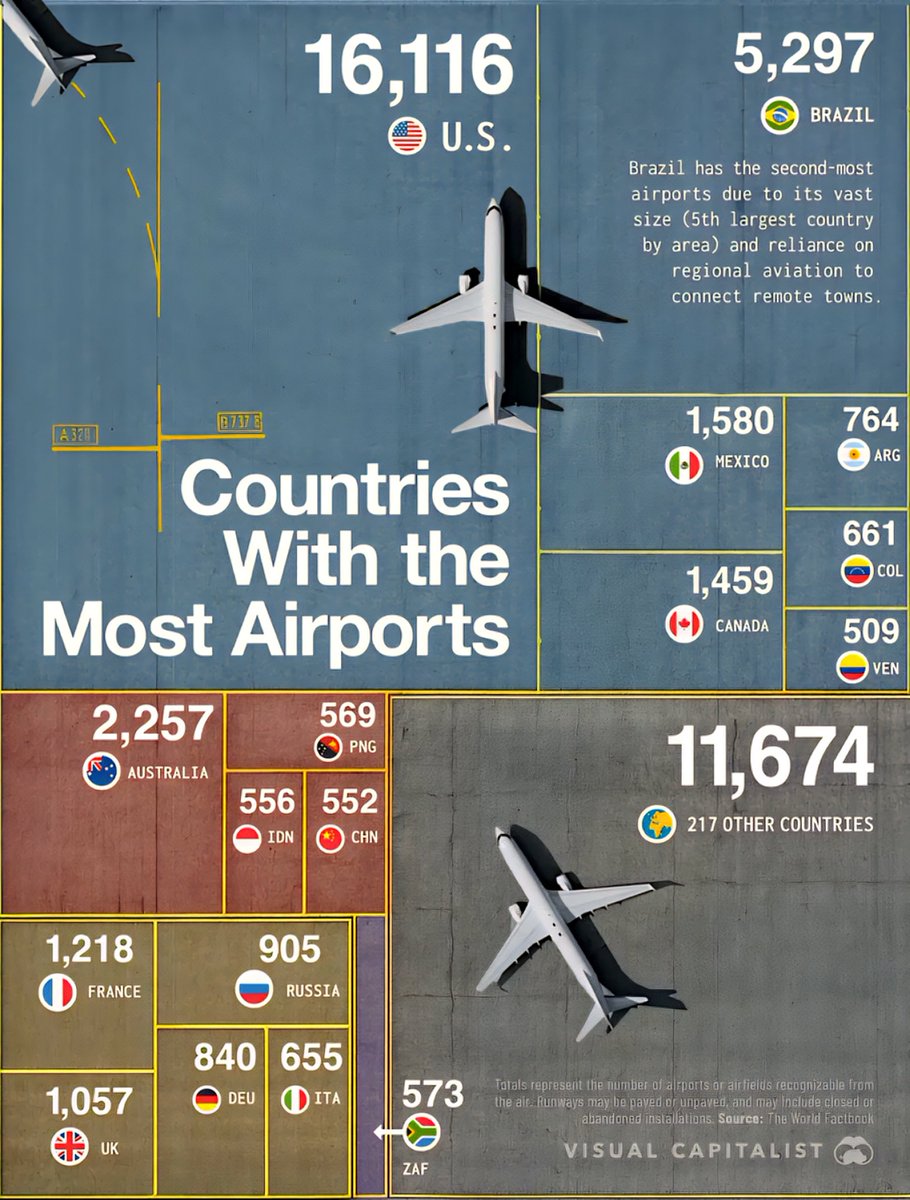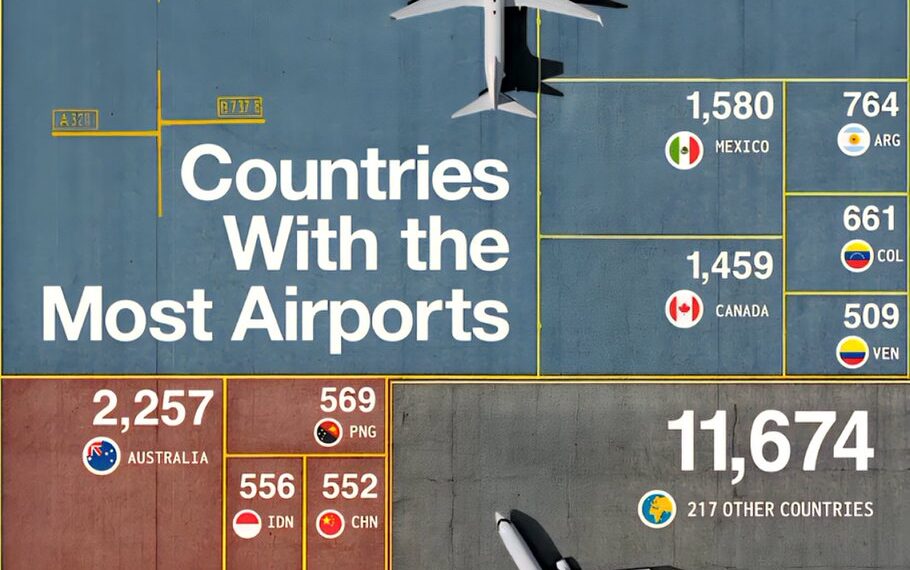Select Language:
Countries Leading in Airport Infrastructure in 2025

United States: The Pinnacle of Aviation Connectivity
The United States remains the undisputed leader in airport infrastructure in 2025, boasting over 13,000 functional airports across the country. Major hubs like Atlanta’s Hartsfield-Jackson Atlanta International Airport facilitate more than 100 million passengers annually, reinforcing America’s dominance in domestic and international air traffic. The extensive network of regional airports supports the country’s economic vitality, especially in sectors like tourism, commerce, and logistics. Notably, the recent expansion projects at Los Angeles International Airport and Dallas/Fort Worth International Airport have increased capacity, ensuring that the U.S. maintains its position at the forefront of global aviation.
Canada: Expanding Its Air Gateway Network
Canada has made significant strides, ranking second globally with approximately 500 airports, including numerous regional airports. Toronto Pearson International and Vancouver International airports are notable for their passenger throughput, serving millions annually and acting as critical connectors between North America and international destinations. The country’s focus on upgrading its airport infrastructure has led to improved facilities, enhanced security protocols, and expanded runways, supporting increased passenger demand driven by tourism and trade. The push toward greener airport operations has also marked Canada’s commitment to sustainable development in the aviation sector.
Mexico: Rapid Growth and Increased Connectivity
Mexico has experienced remarkable growth in its airport network, rising to third place with over 400 airports. The country’s busiest airports, like Mexico City International Airport and Cancún International Airport, handle a large proportion of air traffic in Latin America. Recent investments in infrastructure modernization and runway capacity expansion have helped accommodate year-over-year passenger volume increases. Mexico’s strategic location and thriving tourism industry continue to fuel this rapid expansion, positioning it as a crucial hub for travelers within the Americas.
Brazil: Brazil’s Expanding Flight Network
Brazil ranks fourth among countries with the most airports, with more than 1,200 operational facilities nationwide. Major airports such as São Paulo–Guarulhos and Rio de Janeiro–Galeão serve as key entry points to South America, with ongoing upgrades aimed at improving passenger experience and operational efficiency. Over the past few years, Brazil has focused on developing regional airports to foster domestic tourism and improve connectivity across remote areas. This diversification supports economic growth and enhances Brazil’s standing as a major aviation hub in Latin America.
China: A Rising Power in Airport Development
China has surged ahead in recent years, now hosting over 2,800 airports, making it the country with the most airports worldwide in 2025. Chinese airports like Beijing Capital International and Guangzhou Baiyun International have expanded immensely, with new facilities designed to handle the enormous passenger traffic brought about by the country’s booming economy. China’s strategic investments in high-speed rail linkages and airport technology have created seamless travel experiences domestically, encouraging travel growth and supporting the nation’s push toward becoming a global transportation hub.
India: Massive Infrastructure Growth
India’s airport network has seen explosive growth, with over 500 airports and airstrips now operational. Major airports in Delhi, Mumbai, and Bengaluru are undergoing extensive upgrades to handle a burgeoning middle class and increased international travel. The government’s focus on upgrading regional airports has opened up remote areas, fostering economic development in less connected parts of the country. With several greenfield airport projects underway, India’s infrastructure boom promises continued expansion and modernization in the coming years.
Addendum: What the Numbers Say About Global Air Traffic
The rapid growth in airport numbers across these nations underscores the global surge in air travel, driven by economic development, technological advances, and increased disposable incomes. While the United States maintains its dominance, emerging markets like China and India have made significant leaps, challenging traditional leaders and reshaping the global aviation landscape.
Note: The data and rankings are based on 2025 statistics, reflecting the latest developments and investments in airport infrastructure worldwide. As countries continue to expand their airports, the trend towards more connected, efficient airspaces is set to accelerate, shaping the future of global travel.





